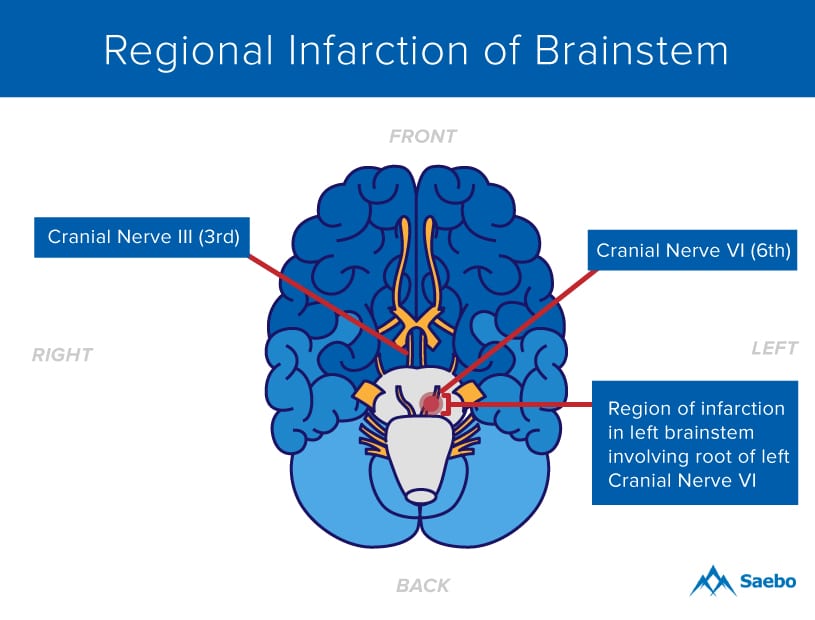Henry Hoffman
Wednesday, March 29th, 2017
Last modified on April 25th, 2022

A brainstem stroke can cause impairments in vital body functions, like breathing, heartbeat, swallowing, and speech, due to a blockage of blood between the brainstem and the brain. The effects can be catastrophic to a stroke patient and prove difficult to recover from.
Fortunately, fast treatment and beginning of the recovery process as soon as possible can make a significant difference in the well-being of a patient after a brainstem stroke. It’s important that you learn why a brainstem stroke occurs, how it’s diagnosed and treated, and what the proper after-stroke recovery is.
Pons stroke and brainstem infarction are different names for brainstem stroke. A brainstem stroke is less common than a hemispheric stroke, but it is difficult to pinpoint where they start. However, this diagram shows how a brainstem stroke can happen by the highlighted area being deprived of blood:

This illustration shows a bottom-to-top perspective of a brainstem stroke:

The brainstem is responsible for controlling the central nervous system and its functions, such as breathing, blood pressure, and consciousness. Your body’s motor control must go through the brainstem before any motor functions are completed, such as raising your arm or pressing a button with your finger.
Therefore, a brainstem stroke can affect some, or all, of these functions. The complications of the stroke are usually predictable by doctors, and beginning recovery soon after a brainstem stroke can help the body restore these functions.
There are 5 key features of a brainstem stroke:
Common symptoms of a brainstem stroke include:

In addition to your healthcare provider asking general questions about your health and when possible symptoms first began, he or she may also check for signs of injury to the brainstem.
Your doctor could run the following diagnostic tests to find out if you’ve had a brainstem stroke:
For any type of stroke, quick medical care is of the utmost importance. The sooner you see your doctor if you suspect a stroke, the sooner you can receive the proper treatment and recovery care to prevent, or regain, loss of body functions. Because a stroke involves the brain, every second between a stroke and treatment counts.
Like other strokes, a brainstem stroke can have long-term health implications. You may need ongoing care, like therapies and medication. Speech therapy may be necessary to improve speech and oral communication with the brain. You may also need physical therapy to improve motor skills and occupational therapy to regain basic skills, like dressing yourself.
The key to thriving after a brainstem stroke is to get medical care as soon as possible. Discuss your symptoms with your doctor, and be available for proper testing to help diagnose a stroke. The quicker you get on the road to recovery, the better your chances are of regaining your body functions and leading a healthy life.
All content provided on this blog is for informational purposes only and is not intended to be a substitute for professional medical advice, diagnosis, or treatment. Always seek the advice of your physician or other qualified health provider with any questions you may have regarding a medical condition. If you think you may have a medical emergency, call your doctor or 911 immediately. Reliance on any information provided by the Saebo website is solely at your own risk.